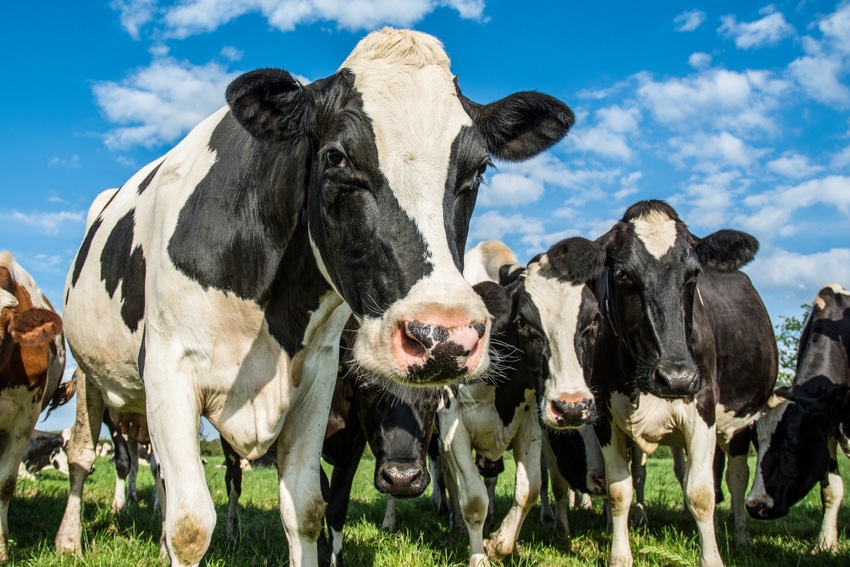October 13, 2020

The Innovation Center for U.S. Dairy has unveiled the Net Zero Initiative, an industry-wide effort that will help U.S. dairy farms of all sizes and geographies implement new technologies and adopt economically viable practices. The initiative is a component of U.S. dairy’s environmental stewardship goals to achieve carbon neutrality, optimized water usage and improved water quality by 2050.
“With the entire dairy community at the table – from farmers and cooperatives to processors, household brands and retailers – we’re leveraging U.S. dairy’s innovation, diversity and scale to drive continued environmental progress and create a more sustainable planet for future generations," said Mike Haddad, chairman, Innovation Center for U.S. Dairy.
The Innovation Center for U.S. Dairy also announced a key milestone on its journey toward carbon neutrality – an up to $10 million commitment and multi-year partnership with Nestlé to support the Net Zero Initiative and scale access to environmental practices and resources on farms across the country.
“Supporting and enabling farmers through the Net Zero Initiative has the potential to transform the dairy industry,” said Jim Wells, chief supply chain officer for Nestlé USA. “Scaling up climate-smart agricultural initiatives is key to Nestlé’s ambition to achieve net zero greenhouse gas emissions by 2050 and will help reduce the carbon footprint of many of our brands.”
Bringing Net Zero to life
The Net Zero Initiative is a collaboration of dairy organizations. Many of the practices and technologies needed to reach the industry’s goals largely exist but require further research and development and overall greater accessibility across farms of all sizes and geographies. Through foundational science, on-farm pilots and development of new product markets, the Net Zero Initiative aims to knock down barriers and create incentives for farmers that will lead to economic viability and positive environmental impact.
“As part of a fifth-generation dairy farming family, we pride ourselves on sustaining our land, caring for our animals and preserving our business for the next generation,” said Tara Vander Dussen, a New Mexico dairy farmer. “We want to be at the table, testing new practices and accessing innovative technology to go further, faster. Because in the end, we all want the same thing – a healthy planet for our families and our children.”
Nestlé is the first of what the U.S. dairy community hopes will be many partners joining the Net Zero Initiative, contributing funding and expertise to help propel the entire industry’s progress toward a more sustainable future.
The dairy community will continue to demonstrate its progress in the environment, animal care, food safety/traceability and community contributions through the U.S. Dairy Stewardship Commitment. As of October 2020, 27 dairy companies representing 70% of the nation’s milk production have voluntarily adopted the U.S. Dairy Stewardship Commitment and contribute to U.S. dairy’s ability to track, aggregate and report on progress.
“We know a lot more is possible – proven science and evidence from dairy’s existing best practices tells us we can get to net zero. This is not only good for dairy farmers, it’s also good for all businesses that serve dairy, the communities where we farm and the millions of people who enjoy dairy every day,” added Haddad.
2050 Environmental Stewardship goals
The Innovation Center for U.S. Dairy – a forum that convenes dairy farmers and industry stakeholders across the value chain to align on shared social responsibility priorities –developed the 2050 Environmental Stewardship Goals. Leveraging a rigorous, third-party reviewed materiality assessment, the industry prioritized the most pressing areas of environmental sustainability as the foundation for its goals:
Become carbon neutral or better;
Optimize water use while maximizing recycling;
Improve water quality by optimizing utilization of manure and nutrients.
In 2008, U.S. dairy was the first agricultural sector to commission a life cycle assessment on fluid milk, which showed that dairy accounts for 2% of total GHG emissions in the U.S. The environmental impact of producing a gallon of milk in 2017 has shrunk significantly from 2007, requiring 30% less water, 21% less land and a 19% smaller carbon footprint.
Source: Dairy Management Inc., which is solely responsible for the information provided and is wholly owned by the source. Informa Business Media and all its subsidiaries are not responsible for any of the content contained in this information asset.
You May Also Like




